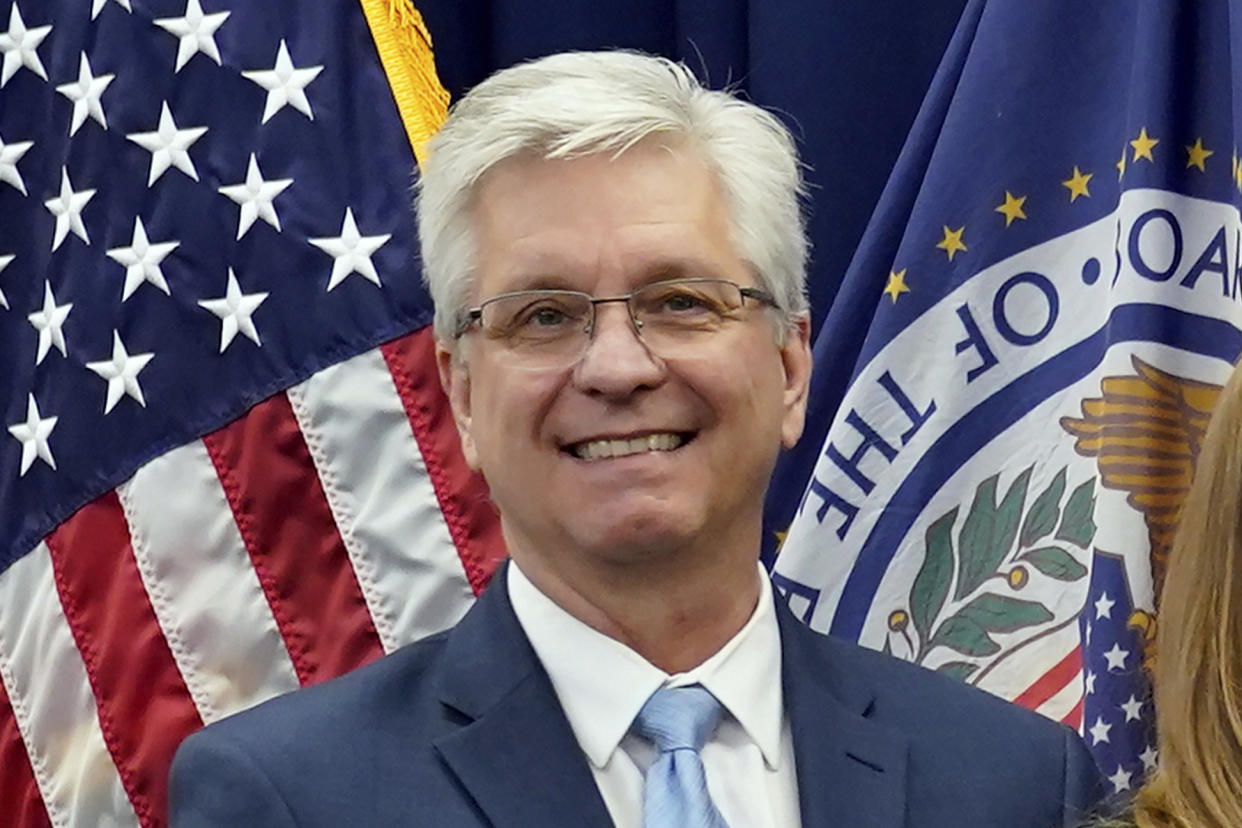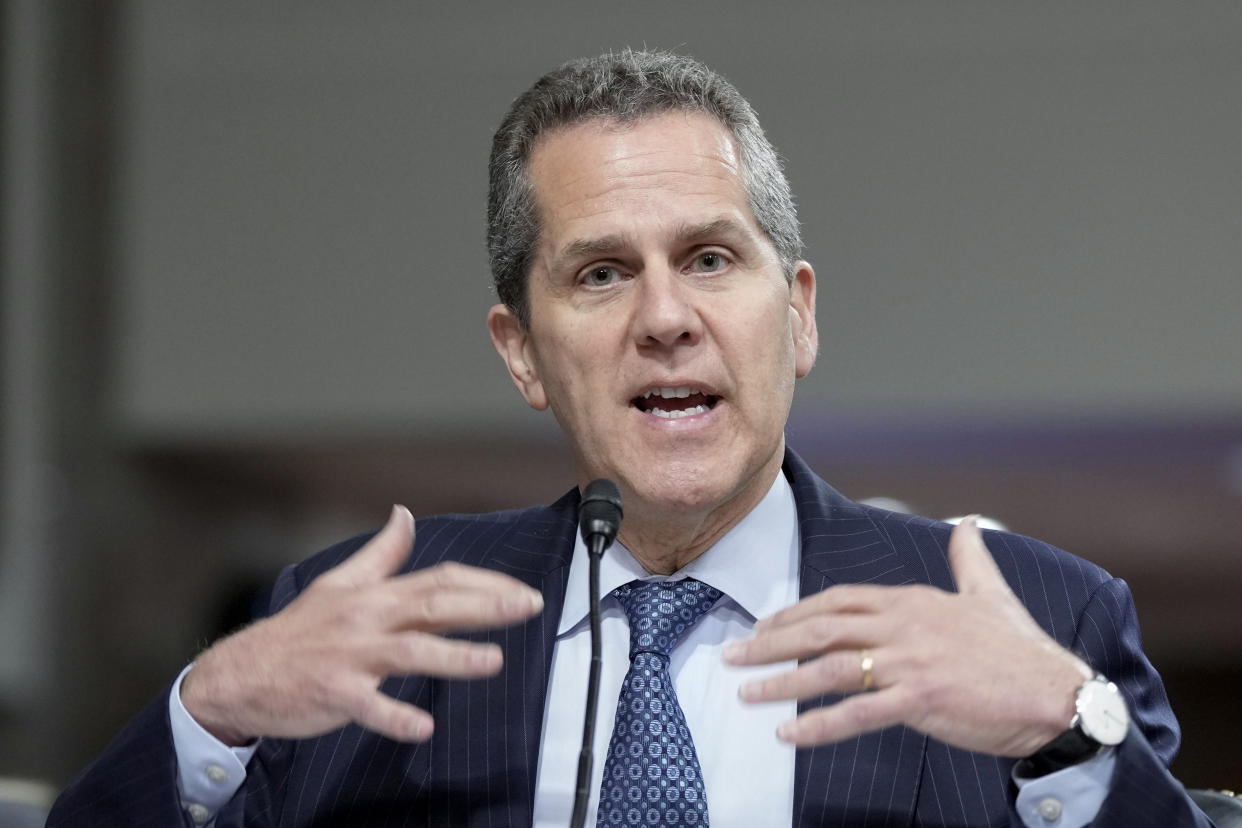Big banks have to raise capital by as much as 19% under proposed US rules
US regulators are proposing that big banks increase their capital levels to protect against future blowups following a regional banking crisis, one of the most sweeping overhauls of how lenders are regulated since the 2008 financial crisis.
Banks affected by the changes will see an aggregate 16% increase in their capital requirements. Regulators say the increase would primarily affect the largest banks and that most have enough capital already to comply. Capital is the buffer banks have to hold to absorb future losses.
Regulators also proposed changes in how these banks assess risks and widened the scope of the new rules to institutions with as few as $100 billion in assets, meaning roughly 30 banks would be subject to the same calculations.
That would include giants such as JPMorgan Chase (JPM) and Bank of America (BAC) as well as midsized regional banks such as Fifth Third (FITB) and Regions (RF).
The impact will differ from bank to bank depending on their operations. Agency officials said the eight largest banks that have huge trading desks and coast-to-coast franchises, such as JPMorgan and Bank of America, will see capital requirements rise by 19% on average.
The smaller banks with $100-$250 million in assets will see an average rise of 5%. A number of mid-sized regional banks fall in this category, including KeyCorp (KEY) and Huntington (HBAN).
Officials argue the changes are needed to make lenders stronger, more resilient, and better prepared for shocks like the crisis of this spring, when the failures of Silicon Valley Bank, Signature Bank, and First Republic triggered deposit withdrawals across the banking world.
"Recent events demonstrated the effects that stress at a few large, regional banking organizations could have on the stability, public confidence, and trust in the banking system," said acting Comptroller of the Currency Michael Hsu.
Regulators will accept comments on this proposal through Nov. 30. Some parts of the proposal would be phased in over three years, starting in July 2025. All rules would be in place by July 2028.

Some doubts within the Fed
The proposal followed a nine-month-long review conducted by Federal Reserve Vice Chair for Supervision Michael Barr.
Fed Chair Jay Powell supported putting this new capital proposal out for comment but said in a statement released Thursday that regulators need to weigh the costs of capital increases overall and for specific areas, including capital markets and operational risk.
"While there could be benefits of still higher capital, as always we must also consider the potential costs," he said, noting that the proposal is tougher than international standards, and could lead to a decline in liquidity for capital markets and push activities into the shadow banking system.
"This is a difficult balance to strike, and striking it will require public input and thoughtful deliberation."
Two Fed governors, Christopher Waller and Michelle Bowman, issued separate statements that were critical of the proposal.
Waller said he voted against releasing it for public comment, stating that some elements are already accounted for in annual Fed stress tests and that the new standards could put US banks at a disadvantage when competing with international rivals.
Waller also wrote that the proposal could cause lenders to push higher capital costs on consumers and potentially narrow the scope of US banking activities.
Read more: How to get a personal loan with bad credit

"I am not convinced that it improves the resiliency of the financial system," he added. "At the same time, it will increase costs for families and businesses and could impede market functioning. I don’t think those costs are worth bearing without clear benefits to the resiliency of the financial system."
Bowman, who also voted against components of the new rules, said she believes the proposed higher capital levels would hurt lending and liquidity in markets and that they wouldn’t have addressed the problems that contributed to the regional bank failures earlier this year.
Her concern is that the new rules will force smaller banks to merge, harming competition, and would prefer to address any risk management issues through better regulatory supervision and enforcement actions when necessary.
"While there is more to learn about the recent bank failures, it seems apparent that these failures were caused primarily by poor risk management and deficient supervision, not by a lack of capital," she said.
Bank pushback
The proposed changes unveiled Thursday are part of the US version of an international accord known as Basel III that was developed by the Basel Committee on Banking Supervision, and follow a nine-month-long review conducted by Fed vice chair for supervision Michael Barr.
The goal of the Basel committee — which was convened by the Bank for International Settlements in Basel, Switzerland — was to set global regulatory capital standards so that banks would have enough in reserve to survive crises.
The last version of this accord was agreed to in 2017, but plans to roll it out in the US were delayed by the COVID-19 pandemic.
The new capital proposals are expected to face pushback from the banking industry, which argues that lenders are much more resilient than they were during the 2008 financial crisis and that higher requirements could restrict lending.
"As you raise capital requirements, it makes loans and capital markets more expensive, and that’s permanent," Greg Baer, president of the Bank Policy Institute, told Yahoo Finance. "It becomes a permanent loss to the economy."
American Bankers Association CEO Rob Nichols said in a statement that the rules "fail to appreciate the negative economic consequences that come with forcing already strong banks to hold more capital than what is needed to maintain safety and soundness."
Financial Services Forum CEO Kevin Fromer added that "there is no justification for significant increases in capital at the largest US banks."

Regulatory agency officials said the increases overall were modest and would be offset by the benefits of having a more resilient banking system.
'Risk weights' and paper losses
A key component of these new rules will be higher "risk weights" applied to certain assets banks hold.
The riskier the assets are, the higher the weights and the more capital banks will be required to set aside to absorb any future losses.
These assets can range from Treasuries and mortgages to derivatives and cryptocurrencies.
Another important change is how banks assess future risks. Banks will no longer be able to rely on internal models to estimate how much they could lose on loans — and therefore how much capital should be held against assets such as mortgages.
The fear from regulators is that the internal bank models can underestimate these risks. Instead, regulators will impose uniform standards.
Regulators are also concerned about how banks evaluate the risks from market swings, trading losses, and unexpected operational developments such as litigation.
Thus banks would have to model market risks at the level of individual trading desks for particular asset classes, instead of at the firm level. They can continue to use their own internal models for that evaluation.
Banks with big trading desks could see higher capital requirements, as a result.

As for unexpected operational events, such as litigation expenses, banks would have to use a standardized approach provided by regulators.
Banks worry this will punish lenders that rely on non-interest fee income, such as credit card or wealth management fees, because regulators consider those sources of potential operational risk if internal controls were to break down.
Another big change announced Thursday is that banks with $100 billion in assets or more would have to count any unrealized available-for-sale securities losses against their regulatory capital.
That last rule would reverse a policy put in place last decade when US supervisors decided most small and mid-sized institutions could opt out of deducting these paper losses on bonds from key regulatory capital levels.
In essence, these banks were allowed to report assets that were stronger in theory than they would be in practice.
As Silicon Valley Bank — and the broader investing public — found out in March.
Banks with $100 billion or more in assets will also have to comply with two other requirements that were previously applied to larger banks: a supplementary leverage ratio and a countercyclical capital buffer.
Agency officials said another way to look at all of the changes unveiled Thursday is that the banks that have to comply will be asked to hold an additional 2 percentage points of capital.
They said that most banks have enough capital now but those that don't would be able to build the required amounts in two years.
Click here for the latest stock market news and in-depth analysis, including events that move stocks
Read the latest financial and business news from Yahoo Finance
